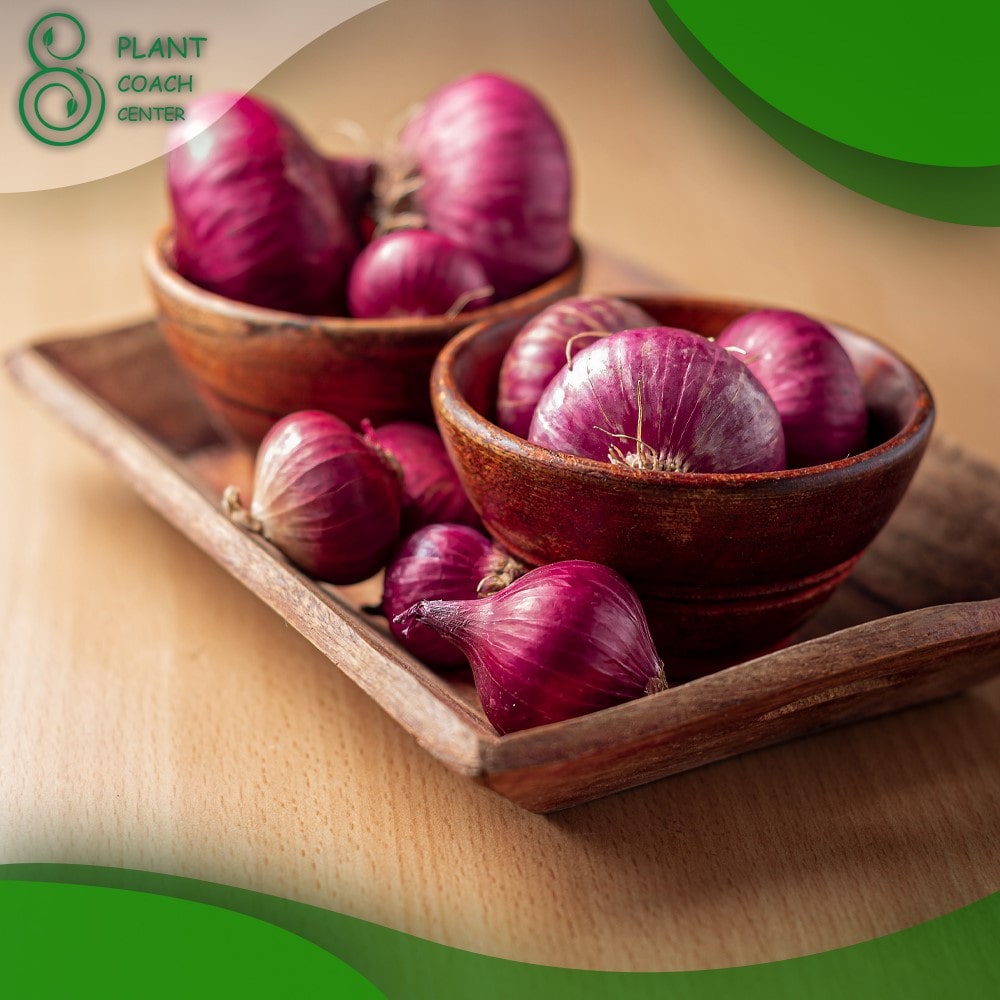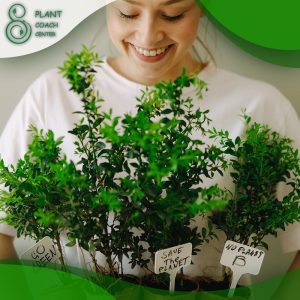When Can I Plant Onion Sets?
Onions are a popular vegetable that can be grown from seeds or sets. Onion sets are small bulbs that have been grown from seeds the previous year and are ready to plant in the ground.
Planting onion sets is an easy and efficient way to grow onions, but it’s important to know when to plant them to ensure a successful harvest. In this article, we’ll go over everything you need to know about when to plant onion sets.
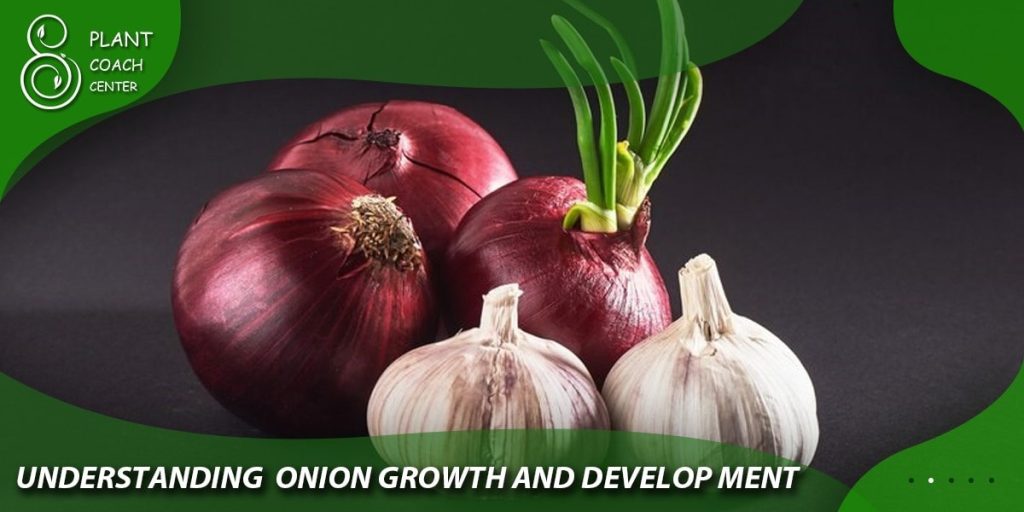
Understanding Onion Growth and Development
Before we dive into when to plant onion sets, it’s important to understand how onions grow and develop. Onions are biennials, which means they complete their life cycle over two years. In the first year, onion plants grow leaves, stems, and bulbs. In the second year, the bulbs mature and produce flowers and seeds.
Anatomy of an Onion Bulb
Onion bulbs are made up of several layers of fleshy leaves that are modified to store food for the plant. The outermost layer is a dry, papery skin that protects the bulb. The layers beneath the skin are succulent and contain the majority of the bulb’s nutrients.
Onion Growth Stages
Onion plants go through several growth stages, from seedling to mature bulb. The stages are as follows:
- Germination: Onion seeds germinate in 7-10 days under optimal conditions.
- Seedling: After germination, onion plants develop into seedlings with a single leaf.
- Vegetative growth: Onion plants grow leaves and stems and develop bulbs in the first growing season.
- Bulb maturation: In the second growing season, onion bulbs mature and produce flowers and seeds.
Factors Affecting Onion Growth and Development
Several factors can affect onion growth and development, including:
– Temperature: Onions prefer cool temperatures between 60-75°F (15-24°C) for optimal growth.
– Light: Onions require 14-16 hours of daylight to produce bulbs.
– Soil: Onions prefer well-draining soil with a pH between 6.0-7.0.
– Water: Onions require consistent moisture to grow properly.
– Nutrients: Onions require nitrogen, phosphorus, and potassium to grow.
Understanding these factors is essential for planting onion sets at the right time.
Climate and Weather Considerations
Onions are cool-season vegetables that prefer mild temperatures and consistent moisture. Planting onion sets too early or too late can result in poor growth and development. Consider the following climate and weather factors when deciding when to plant onion sets:
Optimal Growing Conditions for Onions
Onions prefer cool temperatures between 60-75°F (15-24°C) for optimal growth. They also require well-draining soil with a pH between 6.0-7.0 and consistent moisture. Onions grow best in full sun but can tolerate partial shade.
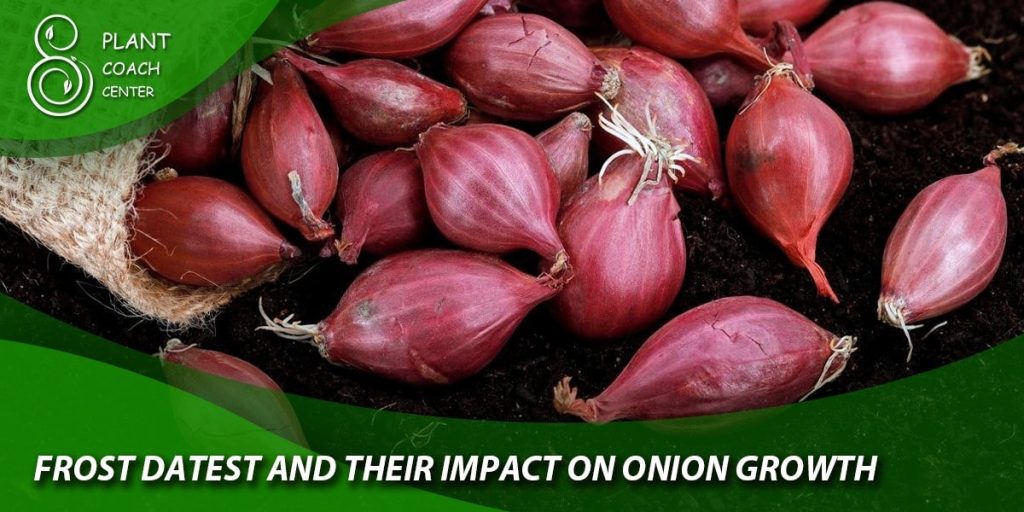
Frost Dates and Their Impact on Onion Growth
Onions are sensitive to frost and should be planted after the danger of frost has passed. In most areas, this is around 2-4 weeks before the last expected frost date. Planting onion sets too early can result in stunted growth or damage to the plants.
How to Protect Onion Sets from Extreme Temperatures
Onions can be sensitive to extreme temperatures, both hot and cold. To protect onion sets from extreme temperatures, consider the following tips:
– Mulch: Mulch around onion plants to help regulate soil temperatures and retain moisture.
– Shade: Provide shade for onion plants during hot weather to prevent wilting.
– Water: Water onion plants deeply and consistently during hot weather to prevent drought stress.
– Cover: Cover onion plants with blankets or plastic sheeting during cold weather to protect them from frost.
By considering these climate and weather factors, you can choose the optimal time to plant onion sets and ensure healthy growth and development.
Soil Preparation for Onion Planting
Onions require well-draining soil with a pH between 6.0-7.0 and consistent moisture for optimal growth. Proper soil preparation is essential for planting onion sets at the right time. Follow these steps to prepare the soil for onion planting:
Soil pH and Nutrient Requirements for Onions
Onions prefer slightly acidic to neutral soil with a pH between 6.0-7.0. If the soil is too acidic, add lime to raise the pH. If the soil is too alkaline, add sulfur to lower the pH. Onions also require nitrogen, phosphorus, and potassium to grow. Work a balanced fertilizer into the soil before planting to provide these nutrients.
Testing and Amending Soil for Optimal Onion Growth
Before planting onion sets, it’s a good idea to test the soil for pH and nutrient levels. You can do this with a soil test kit or by sending a soil sample to a lab for analysis. Based on the results, you can amend the soil with lime, sulfur, or fertilizer as needed.
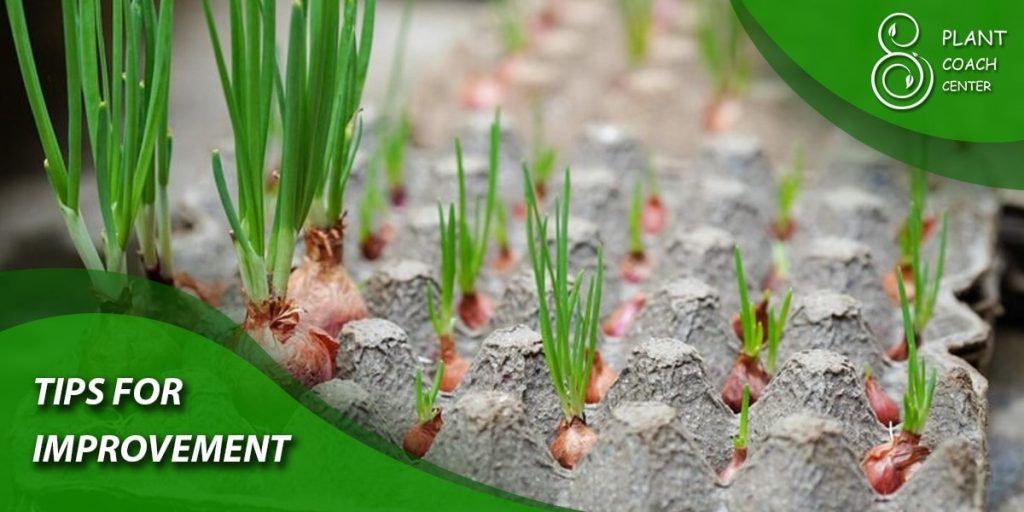
Tips for Improving Soil Drainage and Structure
Onions require well-draining soil to prevent waterlogging and rot. To improve soil drainage and structure, consider the following tips:
– Add organic matter: Work compost, aged manure, or other organic matter into the soil to improve its structure and moisture-holding capacity.
– Avoid compacted soil: Avoid planting onion sets in compacted soil, which can impede root growth and water infiltration.
– Raised beds: Consider planting onion sets in raised beds to improve drainage and soil structure.
Proper soil preparation can ensure that your onion plants have the right conditions for healthy growth and development.
Choosing the Right Onion Sets
Choosing the right onion sets is essential for successful onion growth and development. Consider the following factors when selecting onion sets:
Onion Set Varieties and Their Growing Requirements
There are many onion set varieties to choose from, each with its own growing requirements. Some popular onion set varieties include:
– Yellow onions: These are the most common onion variety, with a pungent flavor and yellow skin.
– White onions: These have a milder flavor than yellow onions and are often used in Mexican and Southwestern cuisine.
– Red onions: These have a mild, sweet flavor and are often used in salads and sandwiches. Choose an onion set variety that is well-suited to your climate and soil conditions.
Selecting the Right Size and Quality of Onion Sets
When selecting onion sets, choose sets that are firm, dry, and free from signs of disease or damage. Onion sets come in different sizes, from small to jumbo. Choose sets that are the appropriate size for your growing conditions. Smaller sets are better for cooler climates, while larger sets are better for warmer climates.
Where to Buy Onion Sets
Onion sets can be purchased at garden centers, nurseries, and online retailers. Choose a reputable seller that offers high-quality, disease-free onion sets.
By considering these factors, you can choose the right onion sets for your growing conditions and ensure healthy growth and development.
Planting Onion Sets
Once you’ve prepared the soil and selected the right onion sets, it’s time to plant them. Follow these steps for successful onion set planting:
Preparing the Planting Area
Choose a planting area that receives full sun and has well-draining soil. Remove any weeds or debris from the area and work the soil to a depth of 6-8 inches. Create furrows or rows for planting the onion sets.
Planting Depth and Spacing for Onion Sets
Plant onion sets 1-2 inches deep with the pointed end facing up. Space sets 4-6 inches apart in rows that are 12-18 inches apart. If planting multiple rows, space the rows 12-18 inches apart.
Best Planting Methods for Onion Sets
There are several planting methods to choose from when planting onion sets:
– Straight planting: Plant onion sets in straight rows using a garden trowel or dibber.
– Wide-row planting: Plant onion sets in wider rows, allowing them to grow closer together and produce smaller bulbs.
– Companion planting: Plant onion sets with other vegetables, such as carrots or lettuce, to maximize space and discourage pests.
Choose a planting method that works best for your growing conditions and space requirements.
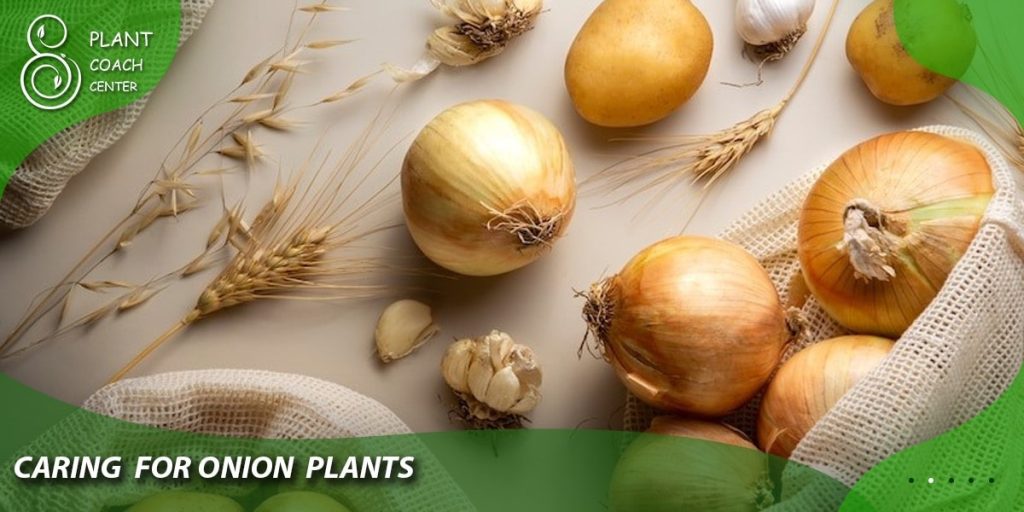
Caring for Onion Plants
Proper care is essential for healthy onion growth and development. Follow these tips to care for your onion plants:
Watering and Fertilizing Onion Plants
Onion plants require consistent moisture to grow properly. Water them deeply once a week, or more frequently during hot weather or dry spells. Fertilize onion plants every 3-4 weeks with a balanced fertilizer to provide the nutrients they need for healthy growth.
Managing Pests and Diseases in Onion Plants
Onion plants can be susceptible to pests and diseases, such as thrips, onion maggots, and downy mildew. To manage these problems, consider the following tips:
– Crop rotation: Rotate onion crops every 3-4 years to prevent the buildup of soil-borne diseases.
– Companion planting: Plant onions with herbs or flowers, such as marigolds, to repel pests and attract beneficial insects.
– Organic pest control: Use organic pest control methods, such as neem oil or insecticidal soap, to manage pest problems.
Pruning and Harvesting Onion Plants
Onion plants do not require pruning, but you can remove any yellowing or damaged leaves as needed. Harvest onion bulbs when the tops begin to dry and flop over. Carefully dig up the bulbs and dry them in a warm, well-ventilated area before storing.
By following these care tips, you can ensure healthy onion growth and development and a bountiful harvest.
Troubleshooting Common Onion Plant Problems
Despite your best efforts, onion plants can still experience problems. Here are some common onion plant problems and how to troubleshoot them:
Identifying and Treating Common Onion Plant Diseases
Onion plants can be susceptible to several diseases, including:
– Downy mildew: This fungal disease causes yellowing and wilting of leaves. Treat with copper fungicide.
– Fusarium basal rot: This fungal disease causes the base of the onion to rot. Remove infected plants and avoid planting onions in the same area for several years.
– Onion smut: This fungal disease causes black, powdery growths on onion bulbs. Remove infected plants and avoid planting onions in the same area for several years.
Dealing with Pest Infestations in Onion Plants
Onion plants can be susceptible to several pests, including:
– Thrips: These tiny insects feed on onion leaves and can cause stunted growth. Use insecticidal soap to treat infestations.
– Onion maggots: These pests burrow into onion bulbs, causing them to rot. Use row covers or insecticidal soap to prevent infestations.
– Cutworms: These pests cut off onion seedlings at the base. Use collars or diatomaceous earth to prevent infestations.
Nutrient Deficiencies and Excesses in Onion Plants
Onion plants can experience several nutrient deficiencies or excesses, including:
– Nitrogen deficiency: This can cause stunted growth and yellowing of leaves. Apply a nitrogen-rich fertilizer to correct the problem.
– Phosphorus deficiency: This can cause stunted growth and poor root development. Apply a phosphorus-rich fertilizer to correct the problem.
– Potassium excess: This can cause brown spots on onion leaves. Reduce the amount of potassium fertilizer applied to correct the problem.
By identifying and treating these problems, you can prevent further damage to your onion plants and ensure healthy growth and development.
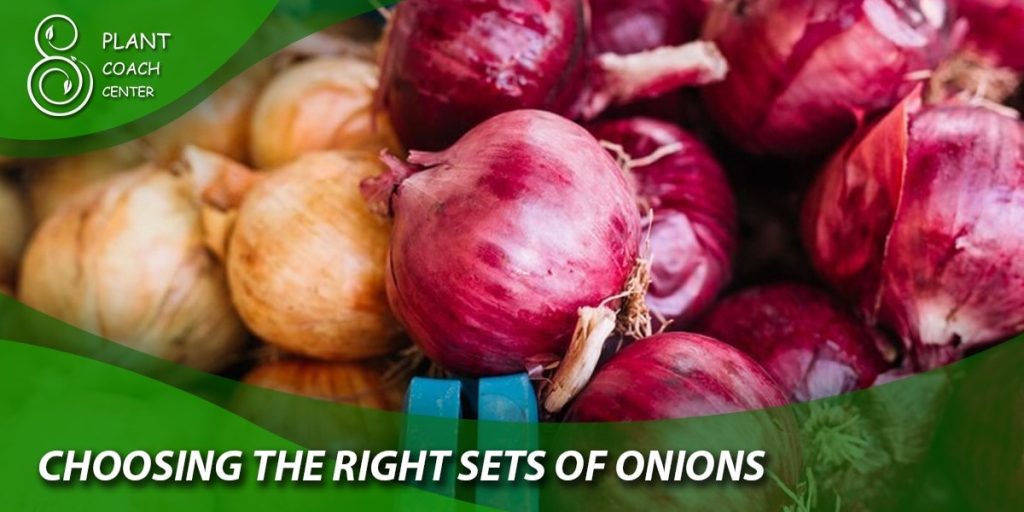
Conclusion
Planting onion sets at the right time is essential for healthy growth and development. By understanding onion growth and development, climate and weather considerations, soil preparation, choosing the right onion sets, and caring for onion plants, you can ensure a bountiful harvest of delicious onions. Remember to troubleshoot common onion plant problems, and enjoy the fruits (or bulbs) of your labor!
When can I plant onion sets?
Onion sets can be planted in early spring, as soon as the ground is workable and the soil temperature reaches around 50°F (10°C).
Can I plant onion sets in the fall?
No, it is not recommended to plant onion sets in the fall as they are more suitable for spring planting.
How do I know if the soil is ready for planting onion sets?
The soil should be well-drained and crumbly, and the danger of frost should have passed before planting onion sets.


